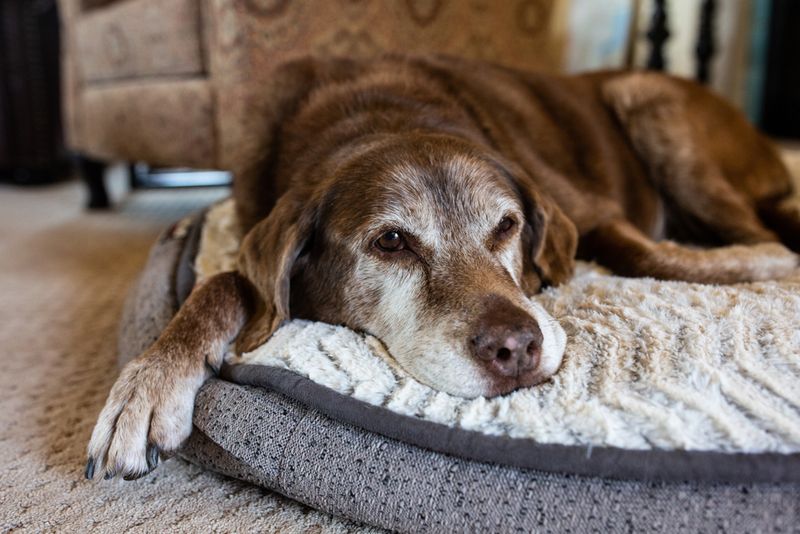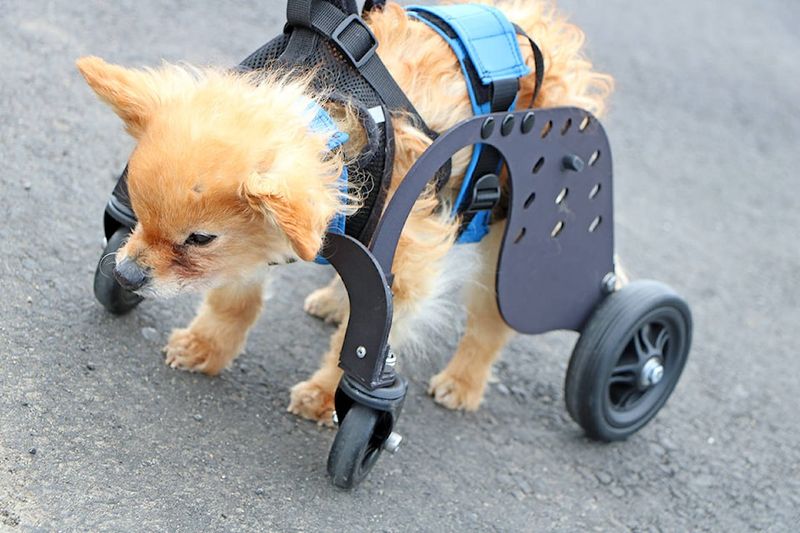Recognizing when your beloved canine companion is reaching the end of their life can be heart-wrenching. Understanding the signs can ease the transition and help provide comfort during their final days.
Loss of Appetite
When your dog begins to turn away from meals, it’s more than just picky eating.
Loss of appetite can signify a deeper underlying issue, often linked to aging or illness.
If your dog, once a voracious diner, shows little interest in even their favorite treats, it might be time to consult with a vet.
Creating a soothing environment may help encourage them to eat.
Consider offering softer foods or warming their meal to enhance the aroma.
This gentle act of care can sometimes stimulate a fading appetite, offering a moment of comfort.
Cherish these small interactions.
Increased Lethargy
Every dog loves a good nap, but when rest becomes excessive, it’s a whisper of change.
Increased lethargy is often a sign that your dog’s energy reserves are dwindling.
Reminisce on the times you shared outdoor adventures, as you provide a peaceful space for rest.
Ensure they have a supportive bed and access to their favorite spots.
A gentle pet or soothing words can convey your love.
These quiet moments spent together may be more valuable than words.
Embrace the tranquility and treasure these serene days.
Difficulty Breathing
When breaths become labored, it can be alarming.
Difficulty breathing in dogs is a critical sign that shouldn’t be overlooked.
Imagine the gentle rise and fall of their chest as a silent plea for comfort.
Ensure their space is calm and airy, reducing any stress or potential irritants.
Consult a veterinarian to provide relief options.
Comfort can also come from simply being present, offering a soothing touch.
Remember, your companionship is a balm for their discomfort.
Loss of Mobility
A dog’s graceful movement slows with age, and a loss of mobility can signal a nearing end.
As you watch them struggle to stand or walk, it becomes a time for gentle support.
Consider mobility aids or soft bedding to alleviate pressure.
Encourage small, gentle walks if they’re up for it, to maintain some muscle tone.
Your encouragement and patience are vital.
Reflect on past playful moments, as you help them navigate this tender stage.
These shared efforts symbolize unwavering love and loyalty.
Incontinence
Incontinence in dogs can be distressing for both pet and owner.
It’s a natural part of aging, though often difficult to manage.
Ensure your pet knows they’re not in trouble; their dignity remains intact.
Provide absorbent pads or diapers and maintain cleanliness to enhance comfort.
Reassuring words and gentle pats can ease any embarrassment they might feel.
These gestures, though simple, are profound in maintaining your bond.
The love you show during these times is a testament to your enduring friendship.
Confusion or Disorientation
As dogs age, cognitive functions can decline, leading to confusion or disorientation.
This bewildered state can be heart-wrenching to observe.
Guide them gently with cues and maintain a routine to provide familiarity.
Talk to them often, as your voice is a comforting anchor in their swirling thoughts.
Keep their environment safe and accessible, minimizing any potential hazards.
Patience and understanding are key.
These compassionate actions create a haven for them amidst the fog.
Withdrawal from Social Interaction
When a once sociable dog retreats from interaction, it signals a shift.
Social withdrawal in dogs can express discomfort or pain.
Recognize this need for solitude while gently offering company when they seek it.
Create an inviting space where they feel safe and secure.
Allow them to approach in their own time, respecting their boundaries.
This silent companionship speaks volumes, affirming your deep connection.
Your presence is a comfort, a reminder they are never truly alone.







